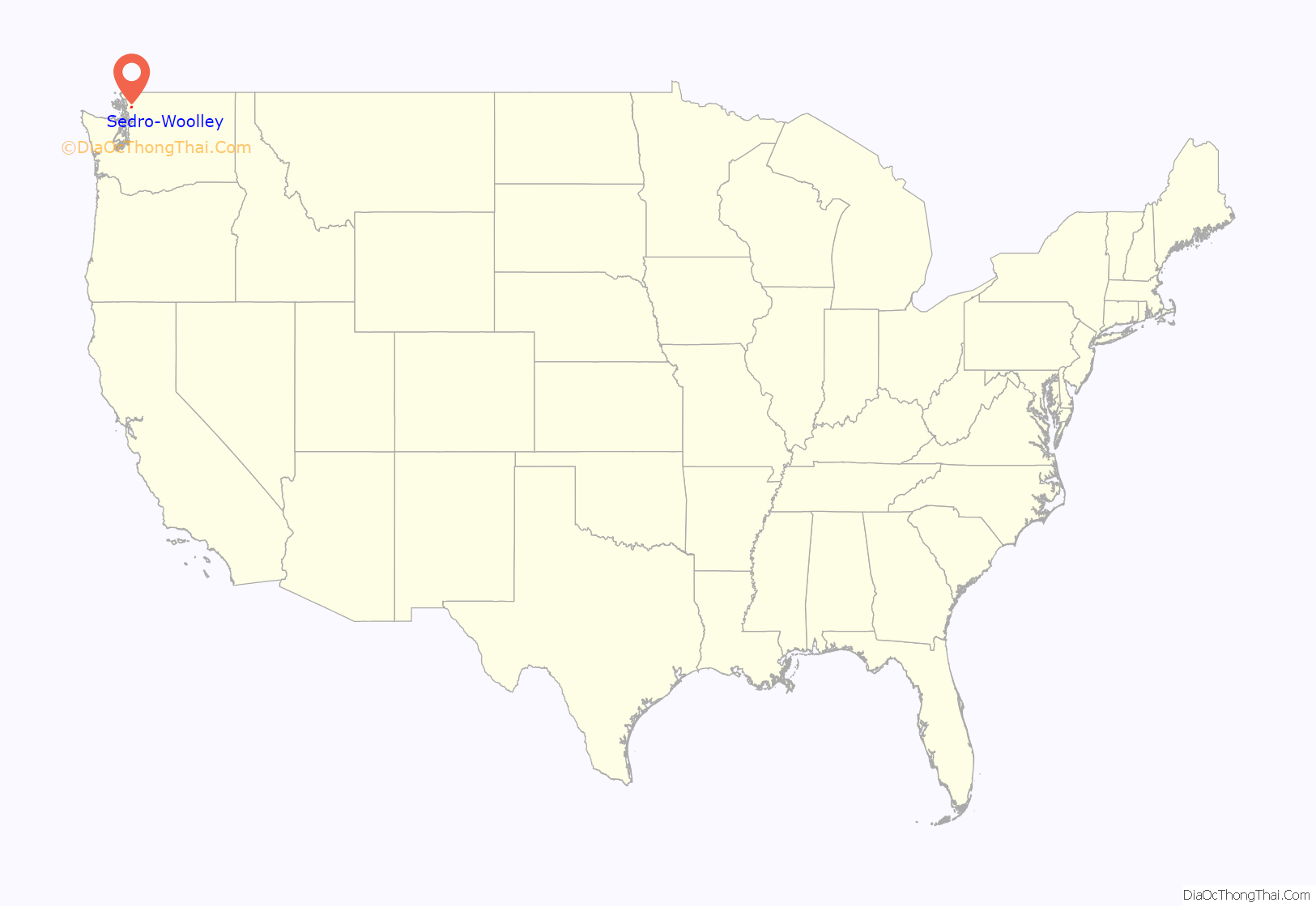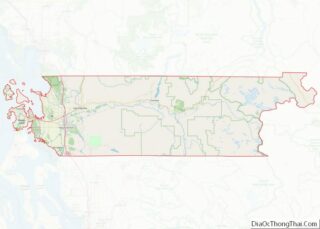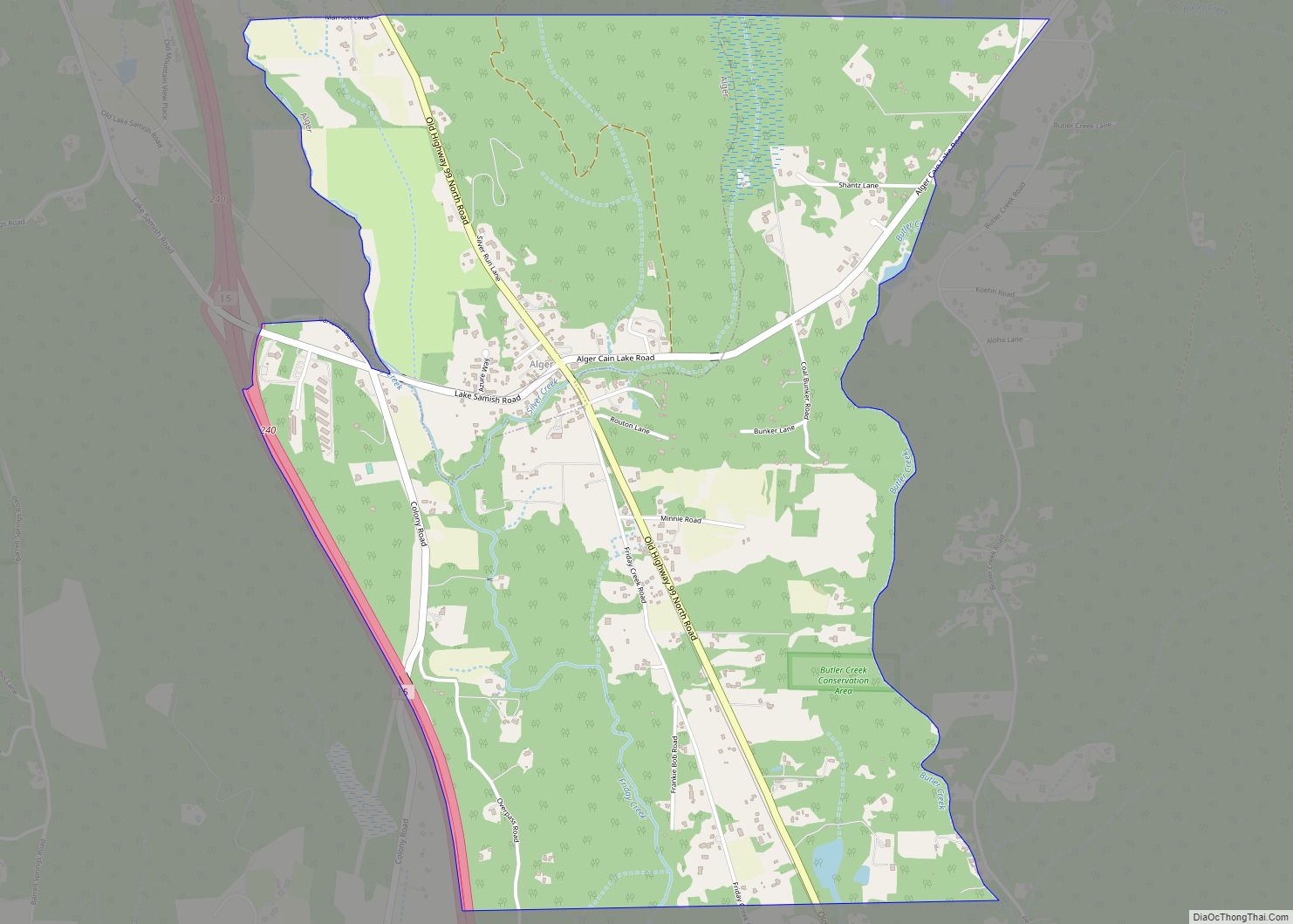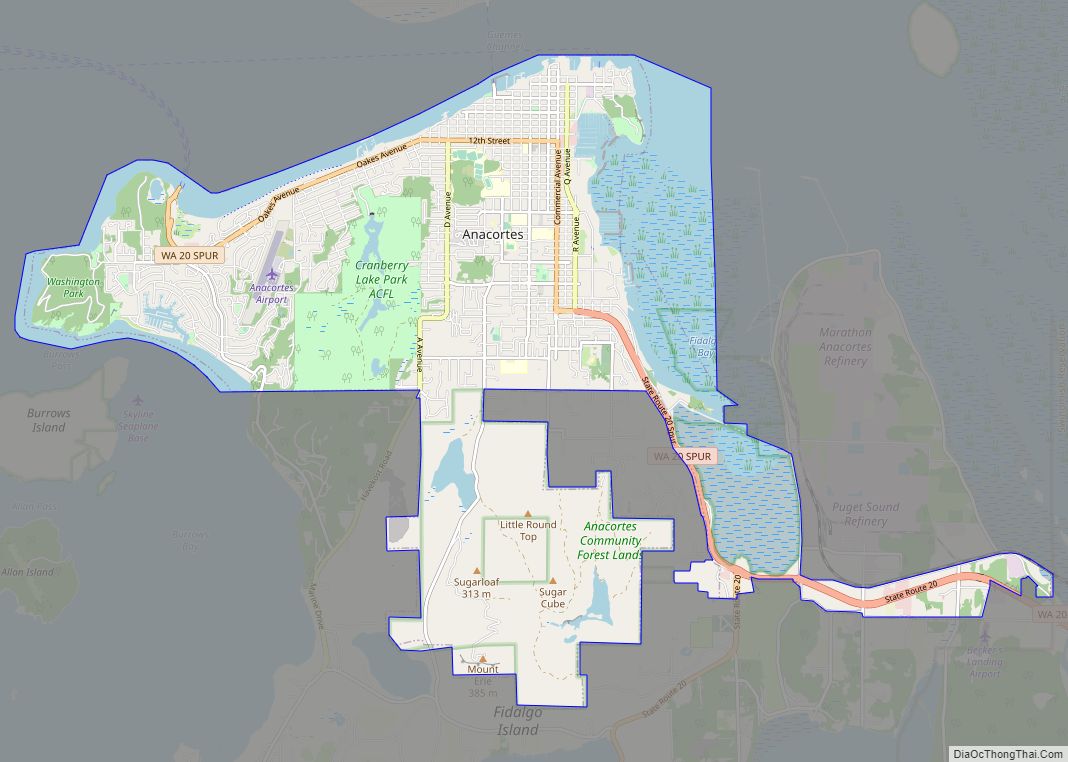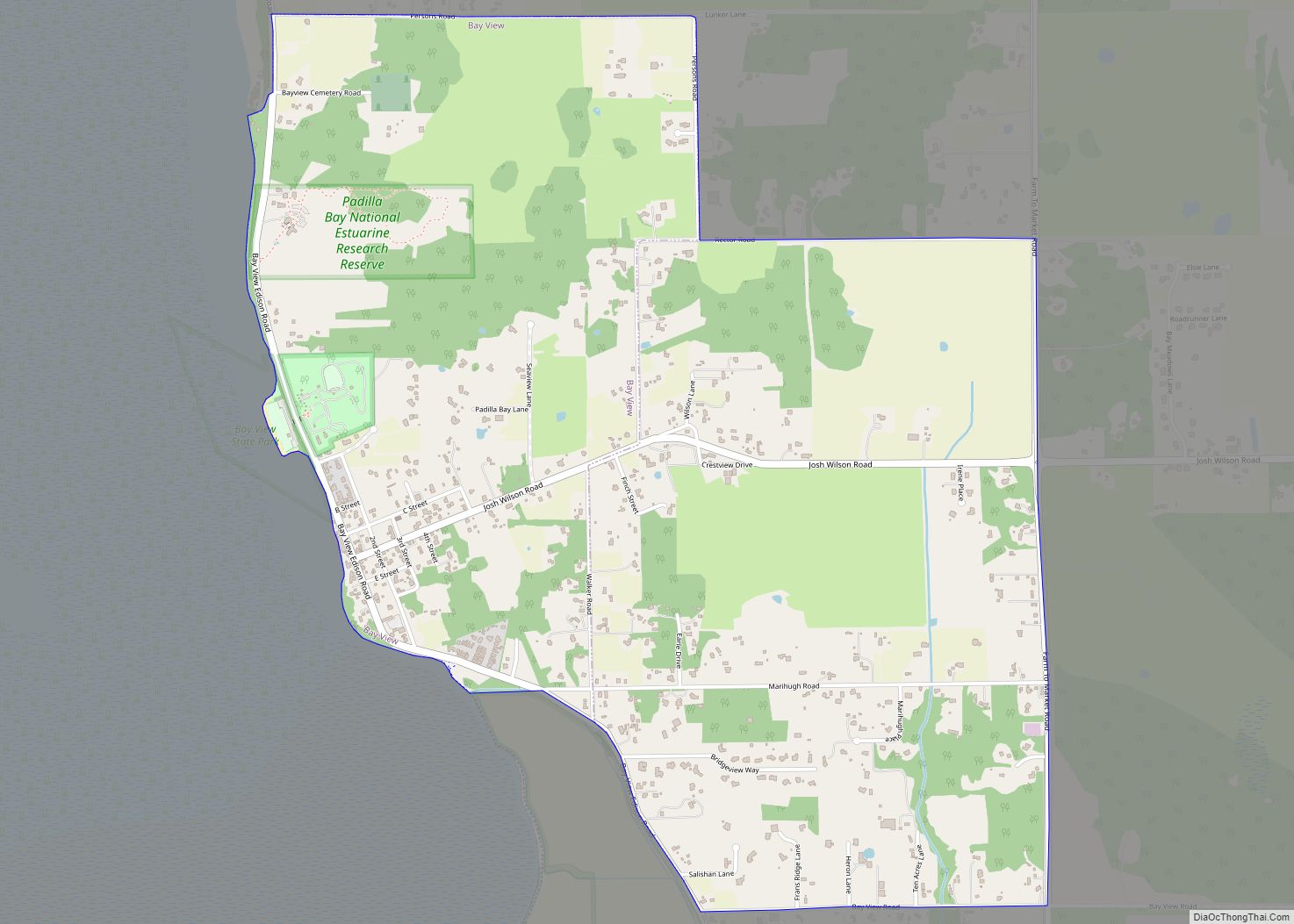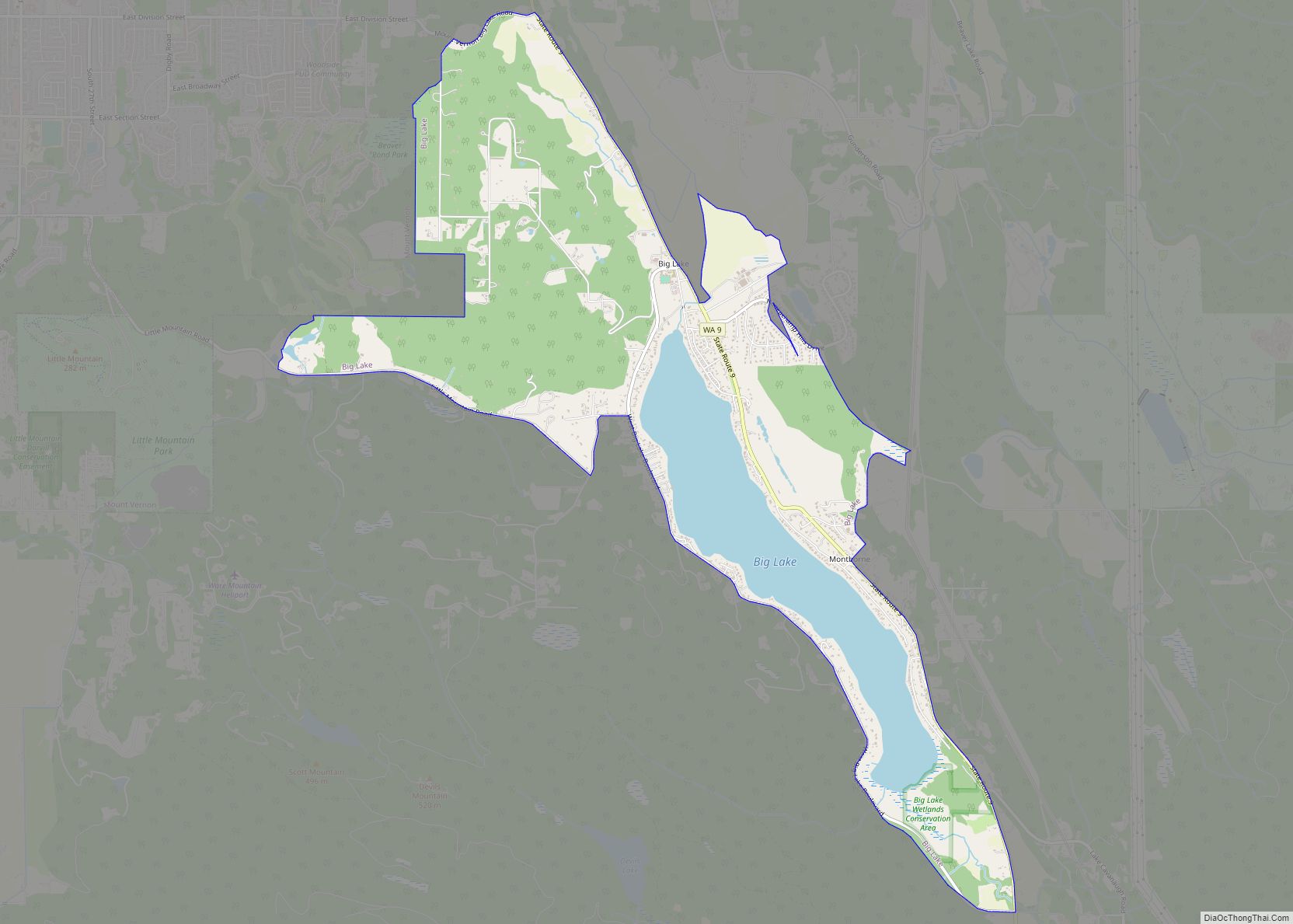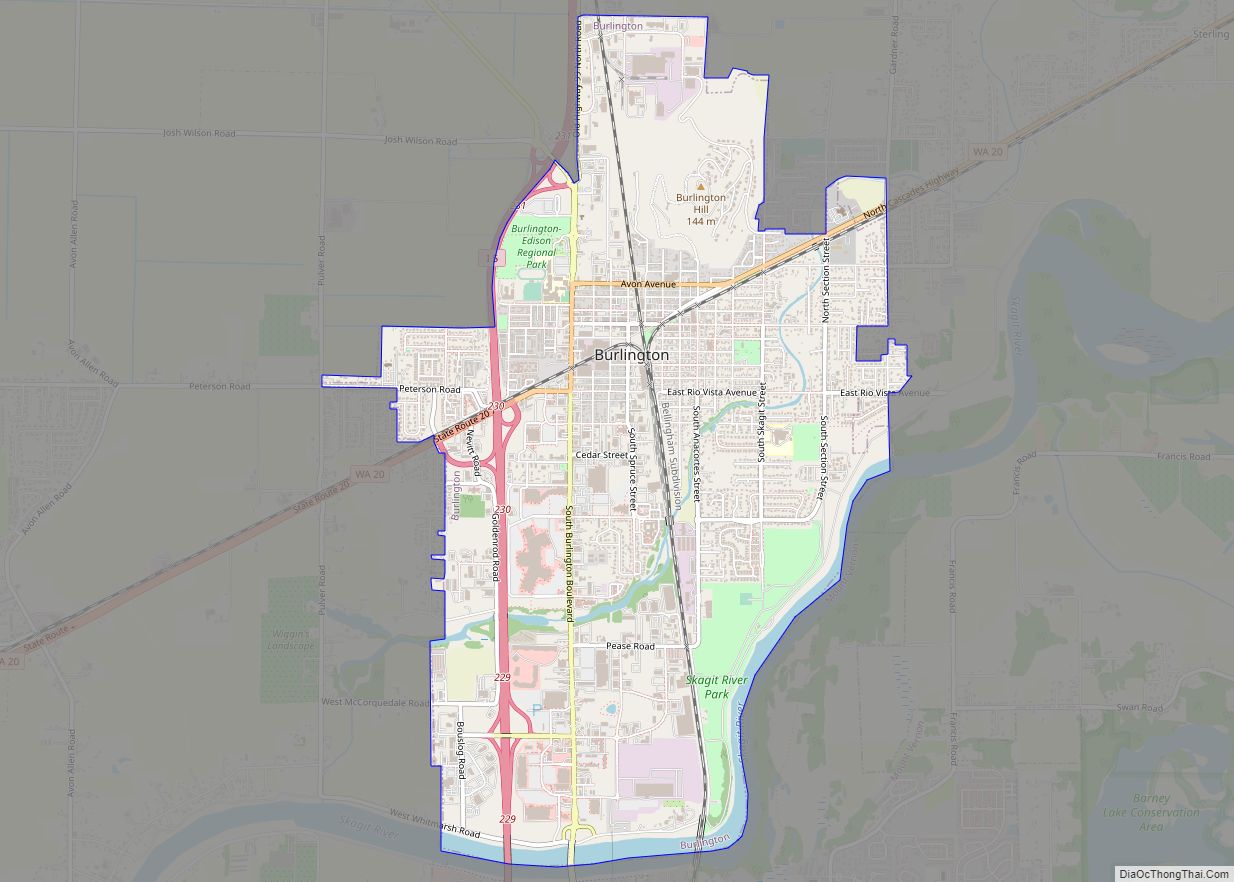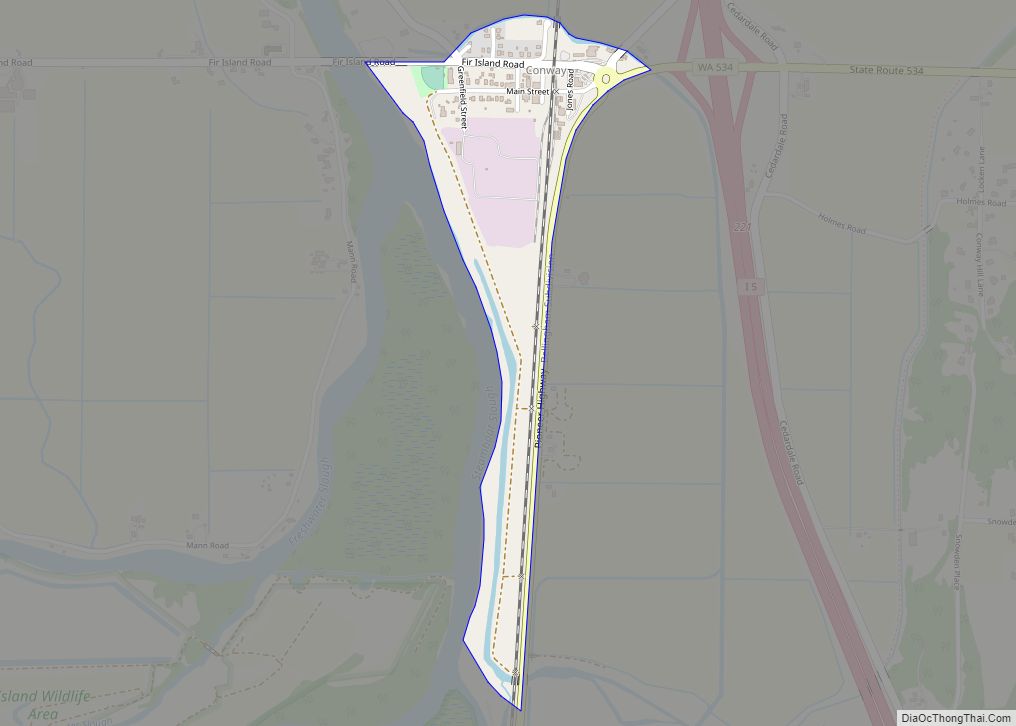Sedro-Woolley is a city in Skagit County, Washington, United States. It is part of the Mount Vernon–Anacortes, Washington Metropolitan Statistical Area and had a population of 12,421 at the 2020 census. The city is home to North Cascades National Park.
| Name: | Sedro-Woolley city |
|---|---|
| LSAD Code: | 25 |
| LSAD Description: | city (suffix) |
| State: | Washington |
| County: | Skagit County |
| Incorporated: | December 19, 1898 |
| Elevation: | 56 ft (17 m) |
| Total Area: | 4.31 sq mi (11.16 km²) |
| Land Area: | 4.31 sq mi (11.16 km²) |
| Water Area: | 0.00 sq mi (0.00 km²) 0% |
| Total Population: | 10,540 |
| Population Density: | 2,801.58/sq mi (1,081.75/km²) |
| ZIP code: | 98284 |
| Area code: | 360 |
| FIPS code: | 5363210 |
| GNISfeature ID: | 1512653 |
| Website: | ci.sedro-woolley.wa.us |
Online Interactive Map
Click on ![]() to view map in "full screen" mode.
to view map in "full screen" mode.
Sedro-Woolley location map. Where is Sedro-Woolley city?
History
Incorporated on December 19, 1898, Sedro-Woolley was formed from neighboring rival towns of Sedro (once known as Bug) and Woolley in Skagit County, northwestern Washington, 40 kilometres (25 mi) inland from the Puget Sound, 64 kilometres (40 mi) south of the border with Canada and 105 kilometres (65 mi) north of Seattle.
Four British bachelors, led by David Batey, homesteaded the area in 1878, the time logjam obstructions were cleared downriver at the site of Mount Vernon. In 1884–85, Batey built a store and home for the Mortimer Cook family from Santa Barbara, California where Cook had been mayor for two terms. Cook intended to name his new Pacific Northwest town Bug due to the number of mosquitos present, but his wife protested along with a handful of other local wives. Cook was already the namesake for the town Cook’s Ferry on the Thompson River in British Columbia. With “Bug” being so unpopular, Cook derived a town name from Spanish; knowing “cedro” was the word for cedar, he replaced one letter to make the name unique, settling on “Sedro”.
Sedro, on the northern banks of the Skagit River, proved susceptible to floods. In 1889, Northern Pacific Railway developer Nelson Bennett began laying track from the town of Fairhaven, 40 kilometres (25 mi) northwest on Bellingham Bay, and real estate developer Norman R. Kelley platted a new town of Sedro on high ground a mile northwest of Cook’s site. The Fairhaven and Southern Railroad arrived in Sedro on Christmas Eve 1889, in time for Bennett to receive a performance bonus from the towns at both ends, and a month after Washington became the 42nd state in the Union.
Within months, two more railroads crossed the F&S roadbed a half mile north of new Sedro, forming a triangle where 11 trains eventually arrived daily. Railroad developer Philip A. Woolley moved his family from Elgin, Illinois, to Sedro in December 1899 and bought land around the triangle. He built the Skagit River Lumber & Shingle Mill next to where the railroads crossed and he started his namesake company town there that was based on sales of railroad ties to the three rail companies, including the Seattle and Northern Railway (forerunner of the Great Northern Railway) and the Northern Pacific Railroad.
Meanwhile, a fourth town rose nearby when the F&S laid rails on a “wye” that led northeast from Sedro about four and a half miles to coal mines. Bennett bought the mines, along with Montana mining financier Charles X. Larrabee, and they soon sold their interests to James J. Hill, owner of the Great Northern. The resulting ore soon turned out to be more suitable for coking coal and a town began there named Cokedale. Cokedale faded in importance when the mine declined and the other towns all merged on December 19, 1898, as Sedro-Woolley.
On May 15, 1922, a large circus elephant known as Tusko escaped from the Al G. Barnes Circus, which was making one of its stops in Sedro-Woolley, at that time. The elephant stomped his way through the little logging town and into local history, demolishing fences, knocking over laundry lines and trees, telephone poles, and a Model T.
After logging and coal-mining declined, the major employers and industries became the nearby Northern State Hospital (a mental-health facility) and Skagit Steel & Iron Works, which rose from the back room of a local hardware store to become a major supplier of implements and parts for logging and railroad customers. The firm manufactured machines and parts for the war effort in World War II and artillery shells, starting in 1953. By 1990, the company was gone and the hospital was closed but new industry, including robotics and aerospace, is developing north of town and on the campus of the old hospital.
Sedro-Woolley Road Map
Sedro-Woolley city Satellite Map
Geography
According to the United States Census Bureau, the city has a total area of 9.87 square kilometres (3.81 sq mi), all of it land.
See also
Map of Washington State and its subdivision:- Adams
- Asotin
- Benton
- Chelan
- Clallam
- Clark
- Columbia
- Cowlitz
- Douglas
- Ferry
- Franklin
- Garfield
- Grant
- Grays Harbor
- Island
- Jefferson
- King
- Kitsap
- Kittitas
- Klickitat
- Lewis
- Lincoln
- Mason
- Okanogan
- Pacific
- Pend Oreille
- Pierce
- San Juan
- Skagit
- Skamania
- Snohomish
- Spokane
- Stevens
- Thurston
- Wahkiakum
- Walla Walla
- Whatcom
- Whitman
- Yakima
- Alabama
- Alaska
- Arizona
- Arkansas
- California
- Colorado
- Connecticut
- Delaware
- District of Columbia
- Florida
- Georgia
- Hawaii
- Idaho
- Illinois
- Indiana
- Iowa
- Kansas
- Kentucky
- Louisiana
- Maine
- Maryland
- Massachusetts
- Michigan
- Minnesota
- Mississippi
- Missouri
- Montana
- Nebraska
- Nevada
- New Hampshire
- New Jersey
- New Mexico
- New York
- North Carolina
- North Dakota
- Ohio
- Oklahoma
- Oregon
- Pennsylvania
- Rhode Island
- South Carolina
- South Dakota
- Tennessee
- Texas
- Utah
- Vermont
- Virginia
- Washington
- West Virginia
- Wisconsin
- Wyoming
